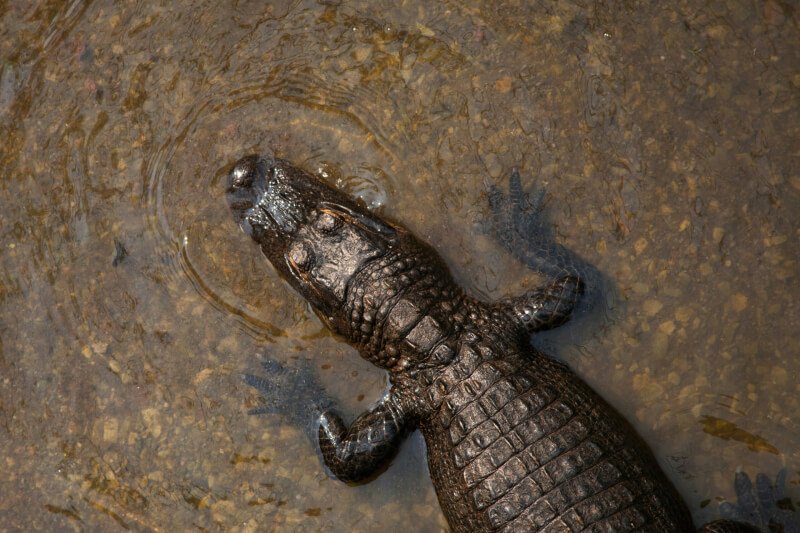Are you a proud reptile owner? If so, you know how important it is to keep your scaly companions happy and healthy. One common issue that reptile owners face is the presence of mites, pesky little critters that can wreak havoc on your reptile’s well-being. But fear not! In this ultimate guide, we will provide you with all the tips and tricks you need to prevent and eliminate reptile mites. From proper hygiene practices to effective treatment methods, we’ve got you covered. So, grab a cup of coffee, sit back, and let’s dive into the world of reptile mite prevention and eradication.
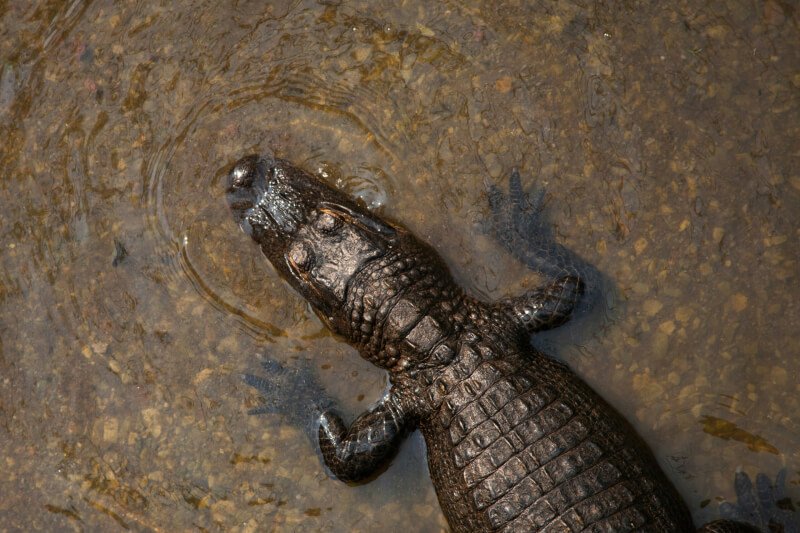
Understanding Reptile Mites
Reptile mites are tiny arachnids that can infest reptiles and cause significant harm to their health. These parasites are a common problem among reptile owners and breeders and can affect a wide range of reptile species. Understanding the signs and symptoms of mite infestation is essential for early detection and prompt treatment.
What are reptile mites?
Reptile mites, also known as snake mites or reptile ticks, are external parasites that feed on the blood of reptiles. They belong to the family Gamasidae and can be found worldwide. These minuscule pests are typically 1-2 millimeters in length and are often mistaken for dirt or debris on the reptile’s skin. Reptile mites reproduce rapidly, laying eggs on the reptile’s scales or within their enclosure, leading to infestations that can quickly spiral out of control if left untreated.
Signs and symptoms of reptile mite infestation
Detecting a reptile mite infestation can be challenging since the parasites are so small and often blend in with the reptile’s skin. However, there are several signs and symptoms that can indicate the presence of mites. These include:
Excessive scratching or rubbing: Infested reptiles may scratch against objects in their enclosure or frequently rub their bodies against surfaces in an attempt to relieve the discomfort caused by mite bites.
Presence of mite feces and eggs: Reptile mites leave behind tiny black or red flecks, which are mite feces, on the reptile’s skin or within the enclosure. These can be seen as small specks on the reptile’s scales or substrate.
Observing behavioral changes: Infested reptiles may exhibit changes in behavior, such as decreased appetite, lethargy, or restlessness. They may also become more irritable or aggressive.
Skin irritations and abrasions: Reptile mites can cause skin irritations, sores, or lesions due to their bites. These irritations can lead to secondary infections if left untreated.
Common reptile species affected by mites
While reptile mites can infest a variety of reptiles, certain species are more prone to infestations. Snakes, including ball pythons, corn snakes, and boa constrictors, are particularly susceptible to mite infestations. Lizards, such as bearded dragons and geckos, can also fall victim to these parasites. Even turtles and tortoises are not immune to mite infestations.
Preventing Reptile Mite Infestation
Preventing reptile mite infestation is crucial for maintaining the health and well-being of your reptiles. By implementing preventive measures, you can significantly reduce the risk of mite infestations and avoid the subsequent stress and health complications they can cause.
Quarantining new reptile acquisitions
When introducing a new reptile to your collection, it is essential to quarantine them to prevent the spread of mites or other potential diseases. Quarantine should last for at least 30 days to ensure any existing mites are detected and treated before the new reptile is introduced to other reptiles. During quarantine, it is advisable to keep the new reptile in a separate enclosure, use separate handling equipment, and diligently monitor for signs of mites.
Proper enclosure setup and maintenance
Creating a suitable and hygienic living environment for your reptiles is another vital step in preventing mite infestations. Ensure that the enclosure is adequately sized for the species, with appropriate temperature and humidity levels. Regularly clean the enclosure, removing any waste or uneaten food promptly. Regularly inspect the enclosure for any signs of mites, including feces or eggs, and take immediate action if any are found.
Routine inspections and cleaning
Regular inspections of your reptiles are essential for early detection of mite infestations. Take time to observe your reptile’s behavior and check their skin for any signs of irritation or lesions. Additionally, inspect the enclosure and substrate for any signs of mites, such as feces or eggs. Routine cleaning of the enclosure, including changing or disinfecting the substrate, is crucial in preventing mites from establishing a colony within the enclosure.
Avoiding contact with wild reptiles
Contact with wild reptiles should be minimized to reduce the risk of introducing mites to your collection. If you handle or come into contact with wild reptiles, be sure to wash your hands thoroughly and change clothes before interacting with your own reptiles. Wild reptiles may carry mites or other parasites that can easily transfer to your captive reptiles, leading to infestation.
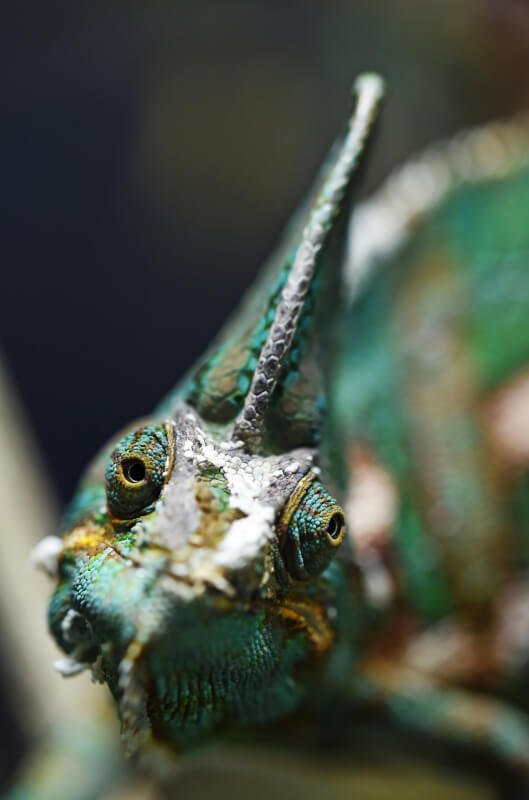
Identifying a Reptile Mite Infestation
Early identification of a reptile mite infestation is crucial to prevent further harm to your reptile and contain the infestation before it spreads. Understanding how to identify the signs of mite infestation can help you take prompt action and seek appropriate treatment.
Physical examination of the reptile
A physical examination of your reptile is an essential step in identifying a mite infestation. Check for any visible mites on the reptile’s skin, paying close attention to folds and crevices where mites may congregate. Use a magnifying glass if necessary to get a closer look.
Presence of mite feces and eggs
Inspect the reptile’s skin and the enclosure for signs of mite feces and eggs. Mite feces are small, dark specks that resemble finely ground black pepper. They may be found on the reptile’s scales, in the enclosure substrate, or on objects within the enclosure. Similarly, mite eggs are tiny, oval-shaped structures that may be attached to the reptile’s scales or within the enclosure.
Observing behavioral changes
If you notice any changes in your reptile’s behavior, such as decreased appetite, restlessness, or excessive scratching, it may be an indication of mite infestation. Keep a close eye on your reptile’s behavior and note any unusual or concerning actions.
Skin irritations and abrasions
Mite bites can cause skin irritations, sores, or lesions on your reptile. Inspect their skin for any redness, swelling, or signs of injury. If you notice any wounds or abrasions, it is essential to seek treatment to prevent secondary infections.
Getting Rid of Reptile Mites
Eliminating reptile mites requires a comprehensive approach that includes treating infested reptiles, using mite-specific treatments, and thoroughly cleaning and disinfecting enclosures.
Separating and treating infested reptiles
If you have identified a mite infestation in one or more of your reptiles, it is crucial to separate them from the rest of your collection to prevent the infestation from spreading further. Once separated, consult a reptile veterinarian or herpetologist for appropriate treatment options. Treatment may involve the use of medication, shampoos, or sprays specifically designed to eradicate mites.
Using mite-specific treatments
There are various mite-specific treatments available on the market that can effectively eliminate mites on reptiles. These treatments often contain medication or chemicals that are safe for reptiles but toxic to mites. Follow the instructions provided by the manufacturer or consult with a reptile specialist to ensure proper usage and dosage.
Manual removal of mites
In addition to using mite-specific treatments, manually removing mites from the reptile’s skin can aid in the eradication process. Using fine-tipped tweezers or a tick-removal tool, carefully lift the mites off the reptile’s skin and promptly dispose of them. Be cautious not to cause any harm to the reptile during this process and consult a professional if you are unsure of how to proceed.
Cleaning and disinfecting enclosures
To prevent reinfestation, it is crucial to thoroughly clean and disinfect the infested reptile’s enclosure. Remove all substrate, objects, and furnishings from the enclosure and clean them with hot water and reptile-safe disinfectant. Scrub the enclosure thoroughly, paying close attention to crevices and corners where mites may hide. Rinse everything well and allow them to dry completely before reintroducing the reptile.
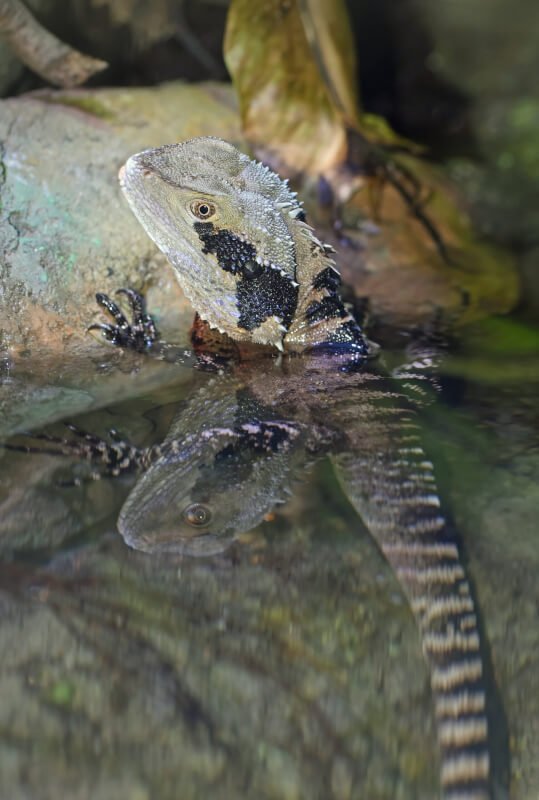
Natural Remedies for Reptile Mite Infestations
Natural remedies can be used as an alternative or complementary approach to treating reptile mite infestations. While they may not be as potent as chemical treatments, they can still be effective in certain cases and may be preferred by some reptile owners. It is important to understand the benefits and limitations of natural remedies before using them.
Benefits and limitations of natural remedies
Natural remedies offer several benefits, including being milder on the reptile’s skin and having fewer potential side effects. They can be used in conjunction with other treatment methods or as a preventive measure. However, natural remedies may not be as effective or fast-acting as chemical treatments, and their efficacy can vary depending on the severity of the infestation.
Diatomaceous earth as a natural treatment
Diatomaceous earth, a fine powder made from fossilized algae, is a popular natural treatment for mite infestations. It works by dehydrating and disrupting the exoskeleton of the mites, ultimately leading to their demise. Diatomaceous earth can be sprinkled on the reptile’s skin or applied to the enclosure, but caution must be exercised to avoid inhalation by both the reptile and the owner.
Essential oils and their effectiveness against mites
Certain essential oils, such as tea tree oil and neem oil, are known for their insecticidal properties and can be effective against mites. These oils can be diluted and applied to the reptile’s skin or mixed with water and used as a spray within the enclosure. However, it is crucial to research the proper dilution ratios and consult a veterinarian or experienced reptile owner before using essential oils on your reptiles.
Herbal soaks and sprays
Herbal soaks and sprays made from natural ingredients, such as chamomile or calendula, can help soothe irritated skin and prevent secondary infections caused by mite bites. These remedies can be applied topically to the reptile’s skin or used as a spray within the enclosure. While they may not directly kill the mites, they can aid in the healing process and provide relief to the reptile.
Professional Assistance for Reptile Mite Infestations
In some cases, professional assistance may be necessary to effectively treat and eliminate a reptile mite infestation. Recognizing when to seek professional help and choosing the right veterinarian or herpetologist is essential for the well-being of your reptiles.
When to seek professional help
If you are unable to successfully treat the mite infestation on your own, or if the infestation is severe or persistent, it is advisable to seek professional assistance. A reptile veterinarian or herpetologist can provide expert guidance, assess the condition of your reptile, and recommend appropriate treatment options.
Choosing a reptile veterinarian or herpetologist
When selecting a reptile veterinarian or herpetologist, it is crucial to find someone experienced in treating reptile mite infestations. Look for professionals who specialize in reptile care and have a good reputation among reptile owners. Seek recommendations from other reptile enthusiasts or consult reptile forums and communities for trusted professionals in your area.
Treatment options available
Reptile veterinarians and herpetologists have access to a range of treatment options that may not be readily available to reptile owners. They can prescribe medication, perform specialized treatments, or recommend procedures to safely and effectively eliminate mite infestations. By seeking professional help, you can ensure that your reptiles receive the most appropriate and effective treatment available.
Cost considerations
It is important to factor in the cost of professional assistance when dealing with a reptile mite infestation. The financial implications can vary depending on the severity of the infestation, the number of reptiles affected, and the treatment options recommended by the professional. Before committing to treatment, discuss the cost considerations with the veterinarian or herpetologist to ensure you are prepared for the expenses involved.
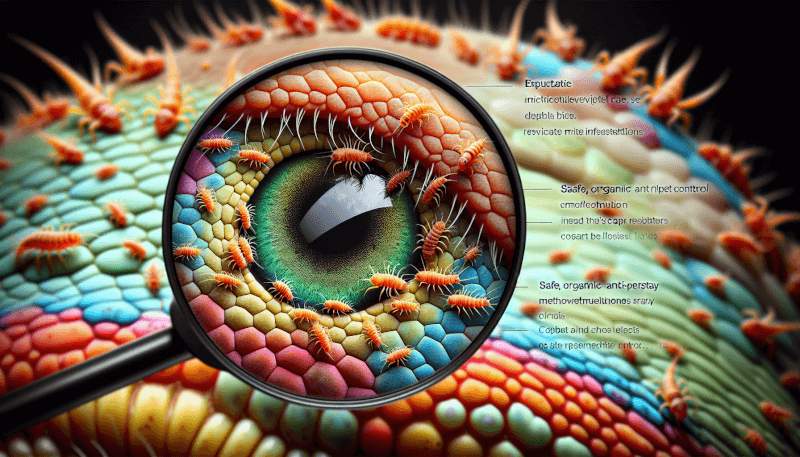
Preventing Reinfestation of Reptile Mites
Once you have successfully treated a reptile mite infestation, it is crucial to take preventive measures to avoid reinfestation. By implementing regular monitoring, maintenance, and proper handling procedures, you can significantly reduce the risk of mite infestations in the future.
Thoroughly cleaning and disinfecting enclosures
Regular cleaning and disinfection of reptile enclosures are essential in preventing reinfestation. Remove all substrate, objects, and furnishings from the enclosure and clean them thoroughly with hot water and reptile-safe disinfectant. Pay close attention to crevices and corners where mites may hide. Rinse everything well and allow them to dry completely before reintroducing the reptile.
Isolating infected reptiles
If you have multiple reptiles in your collection and one becomes infested with mites, it is crucial to isolate the infested reptile until the infestation is completely eradicated. Separating the infested reptile from the others prevents mites from spreading and infecting the rest of your collection. Maintaining isolation until you are confident that the infestation has been resolved is essential for preventing reinfestation.
Proper handling and quarantine procedures for new reptiles
When introducing new reptiles to your collection, it is important to follow proper handling and quarantine procedures. Wash your hands thoroughly and change clothes before interacting with your reptiles, especially if you have been in contact with other reptiles or wild animals. Quarantine new reptiles in a separate enclosure for at least 30 days, monitor them closely for any signs of mites, and ensure they receive appropriate veterinary examination and treatment before introducing them to your existing collection.
Regular monitoring and maintenance
Routine inspections and maintenance are essential in preventing reinfestation. Regularly observe your reptiles for any signs of mites, including changes in behavior, skin irritations, or feces and eggs. Ensure that enclosures are kept clean and hygienic, with proper temperature and humidity levels. By staying vigilant and proactive, you can detect and address any potential mite infestations before they become a widespread problem.
Health Risks and Consequences of Reptile Mite Infestations
Reptile mite infestations pose several health risks and consequences to the affected reptiles. Ignoring or neglecting mite infestations can lead to severe health complications, weakened immune systems, and potential fatalities.
Secondary infections caused by mites
Mite bites can cause open sores and skin irritations on reptiles, making them vulnerable to secondary infections. Bacteria can enter through the wounds, leading to abscesses, cellulitis, or other bacterial infections. These secondary infections can be painful for the reptile and require additional treatment and care.
Physical and emotional stress on reptiles
Infested reptiles undergo significant physical and emotional stress due to mite infestations. The constant itching, discomfort, and pain caused by mites can result in decreased activity levels, loss of appetite, and overall lethargy. This physical and emotional distress can have long-lasting effects on the reptile’s health and well-being if not addressed promptly.
Weakened immune systems
Reptile mite infestations can weaken the reptile’s immune system, making them more susceptible to other illnesses and infections. The stress caused by mite infestations can compromise the reptile’s natural defenses, leaving them vulnerable to a range of diseases. Prompt and effective treatment of mite infestations is crucial in maintaining a reptile’s overall health and immune function.
Health complications and potential fatalities
If left untreated or undetected for an extended period, reptile mite infestations can lead to severe health complications and potentially result in fatalities. Mite infestations can cause anemia, dehydration, organ damage, and even sepsis in extreme cases. The quicker a mite infestation is identified and treated, the better the chances of a full recovery for the reptile.
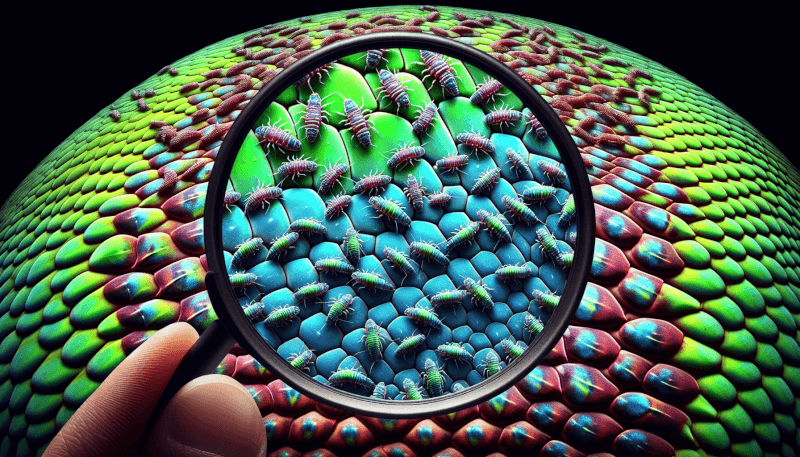
Educating Reptile Owners and Breeders
Raising awareness about reptile mites and the importance of preventive measures is essential for reptile owners and breeders. By educating the community, sharing experiences, and promoting responsible reptile ownership, we can minimize the occurrence of mite infestations and ensure the well-being of these fascinating creatures.
Raising awareness about reptile mites
Many reptile owners and breeders are unaware of the risks posed by mite infestations and the importance of preventive measures. By raising awareness about reptile mites and the potential consequences of infestations, we can help others recognize the signs and take appropriate action to protect their reptiles and collections.
Educational resources and materials
Reptile owners and breeders can benefit from access to educational resources and materials that provide information on all aspects of mite prevention, identification, and treatment. Online resources, books, and articles can offer valuable insights and guidance on best practices for preventing and eliminating mite infestations.
Promoting responsible reptile ownership
Responsible reptile ownership plays a significant role in preventing mite infestations and ensuring the overall health and welfare of reptiles. By promoting responsible ownership practices, such as proper enclosure setup and maintenance, regular check-ups with reptile veterinarians, and informed decision-making when acquiring new reptiles, we can cultivate a community that prioritizes the well-being of reptiles.
Sharing experiences and success stories
Sharing experiences and success stories of dealing with reptile mite infestations can provide valuable knowledge and encouragement to others facing similar challenges. By sharing our experiences, we can offer support, tips, and insights that may help others overcome infestations and prevent future occurrences.
Conclusion
Reptile mite infestations can be a significant concern for reptile owners and breeders, but with proper understanding, preventive measures, and prompt treatment, they can be effectively prevented and eliminated. By implementing measures such as quarantining new acquisitions, maintaining hygienic enclosures, and regularly monitoring and cleaning, the risk of mite infestations can be significantly reduced. Additionally, seeking professional assistance when necessary and educating others about the risks and preventive strategies can contribute to a community that prioritizes the health and well-being of reptiles. By staying informed and proactive, you can ensure that your reptiles thrive in a mite-free environment.

